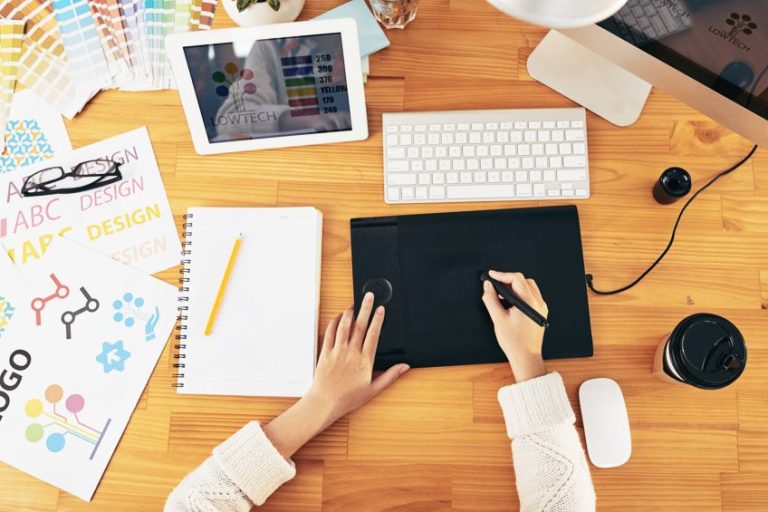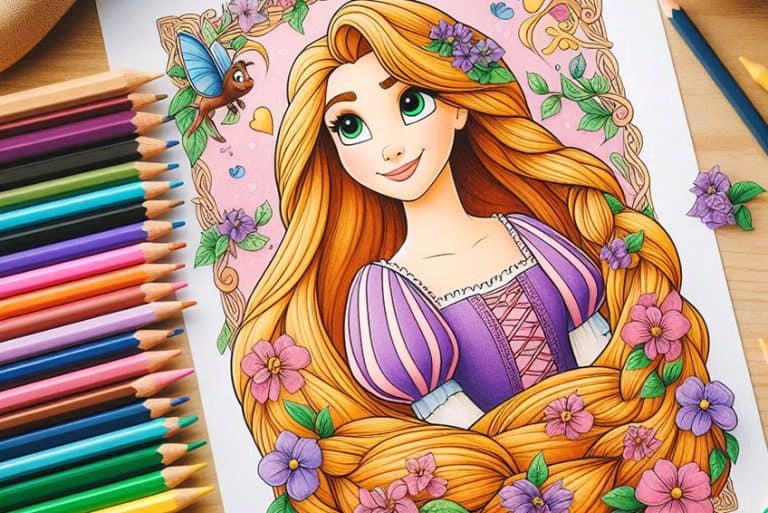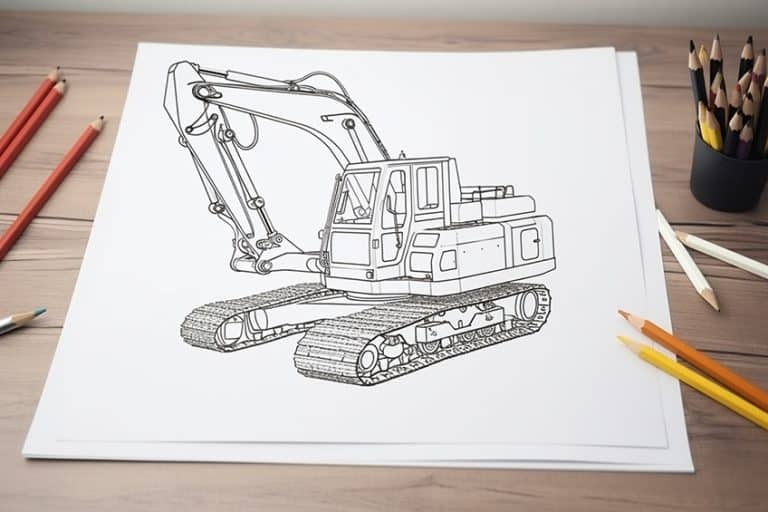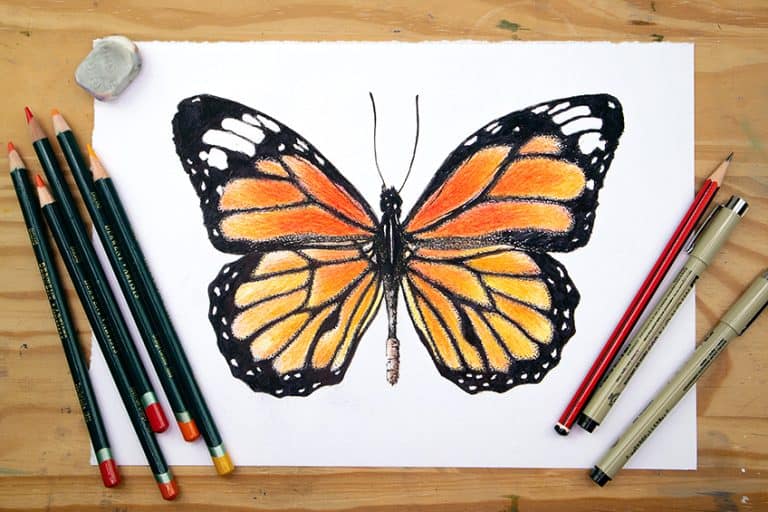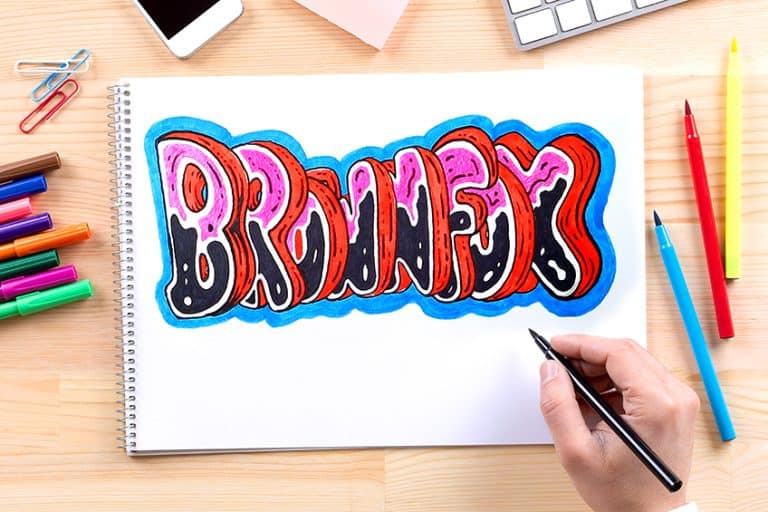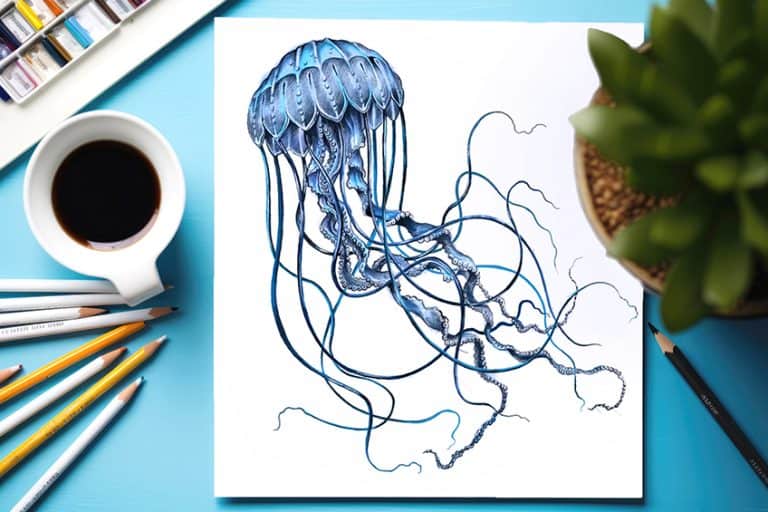How to Draw Bubbles – Create a Colorful Drawing of Bubbles
Learning how to draw bubbles is a great drawing exercise because of its visual versatility. Bubbles can work well within different genres of art as an additional feature that might enrich the scene. Bubbles also have a very ethereal quality, which makes them a great visual within the fantasy-related genres of art. There are many ways to use a bubble drawing, whether it is an additional feature or a focal point. This unique exercise on learning how to sketch bubbles provides you with an interesting drawing challenge, as it also teaches you a little bit about the effect that highlights can make within a drawing.
An Easy Guide to Drawing Male Poses
Learning how to sketch bubbles is really simple to do and in this tutorial, we will be breaking down the basic drawing process. We will find that this simple structure is really easy to draw, and we will also see that the more we draw, the more the structure is contextualized and makes sense. Once we know the basic process for a drawing of bubbles, we will also find that they are very easy to replicate for a scene where we want a variety of bubbles. Whether you make a pencil bubbles drawing or a digital drawing of bubbles, you will find that the process is similar for both.
Necessary Materials
This tutorial on a drawing of bubbles is done with a digital device, however, the drawing process is transferable to traditional mediums as well which means you can make a pencil bubbles drawing with the same steps. If you are using traditional mediums, you want to make sure that you have some black paper, as well as white, blue, pink, and yellow colored pencils. We will also want to make sure we have an eraser and a sharpener for fixing any silly mistakes along the way.
All necessary materials can be found below:
- Colored pencils
- Black paper
- Sharpener
- Eraser
A Step-by-Step Guide on Drawing Bubbles
In this tutorial on how to draw bubbles, we will break down the process of how we turn a simple circle into a liquid bubble. We will learn how to use colors to create a rainbow-ish effect within the rim of the bubble, giving it a soapy quality. We will also learn how to curve these shapes and colors and then lastly add highlights to emphasize the shiny quality of the bubble.
Now that we know what to expect let’s go through this pencil bubble drawing.
Step 1: Drawing the Circle
We start by drawing a circle on the page with our white pencils, this is going to establish the form and shape of the bubble. Once we have drawn this, we then will work on details within the bubble.
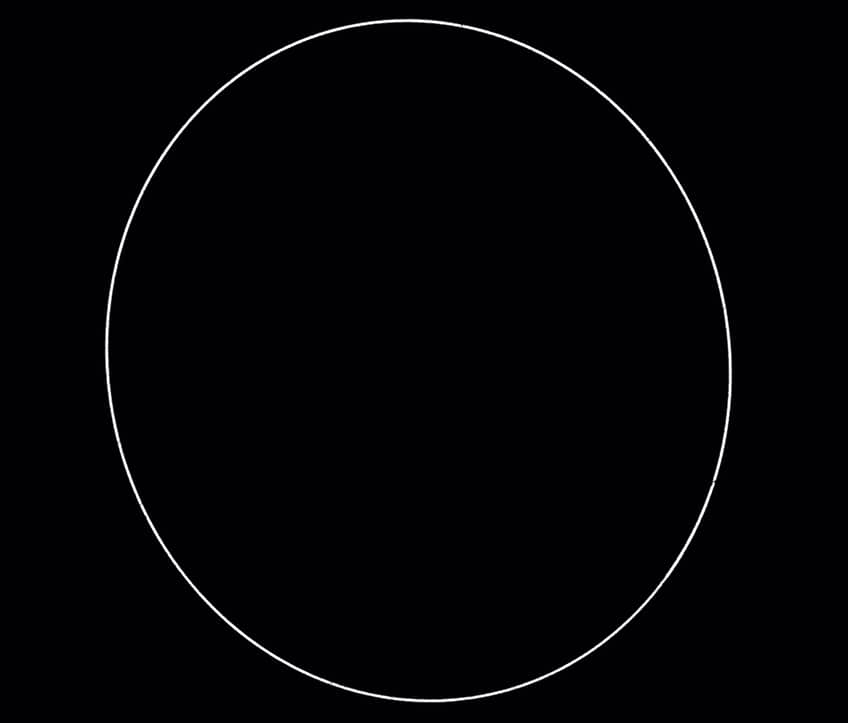
Step 2: Adding Color to the Rim of the Circle
Now that we have the circle drawn with our white pencils, we know how to proceed by sketching along that white circle with a combination of blue, yellow, green, and pink colored pencils.

The aim here is to color over the white rim, making sure that we add colors along the entire rim of the circle. We can color over the white rim, as well as color slightly inside of the white rim.
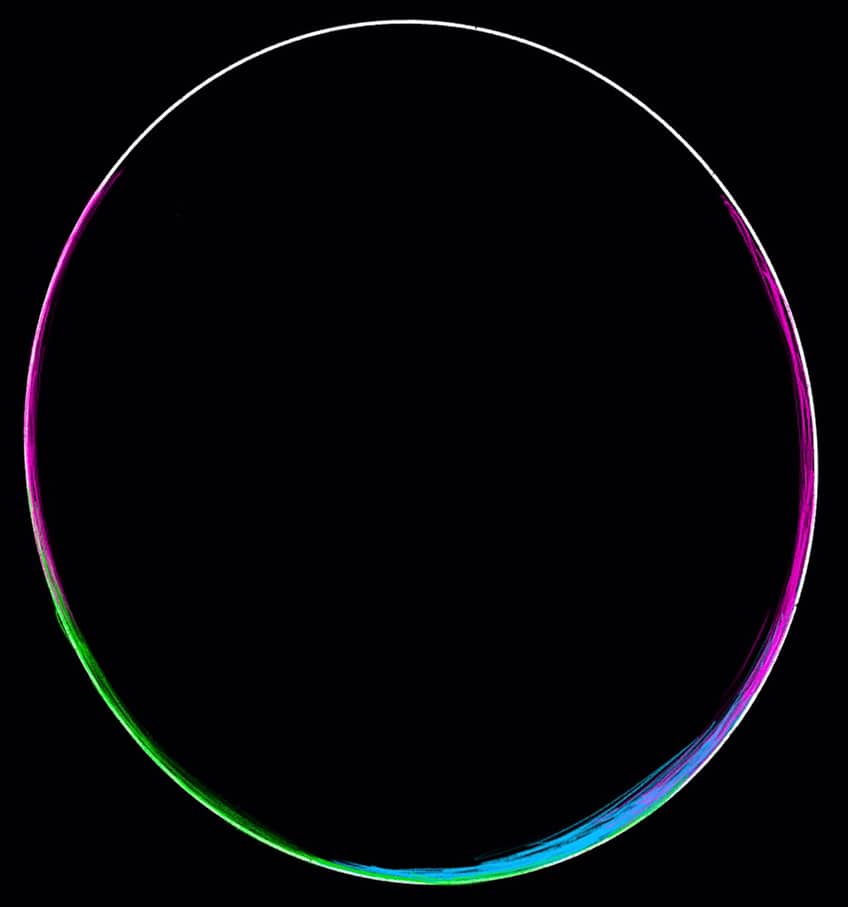
We now want to start working on some curved colored lines that flow along the curvature of the rim. We want to make sure that we keep these marks as lines that flow along the inside of the white rim inside the bubble.
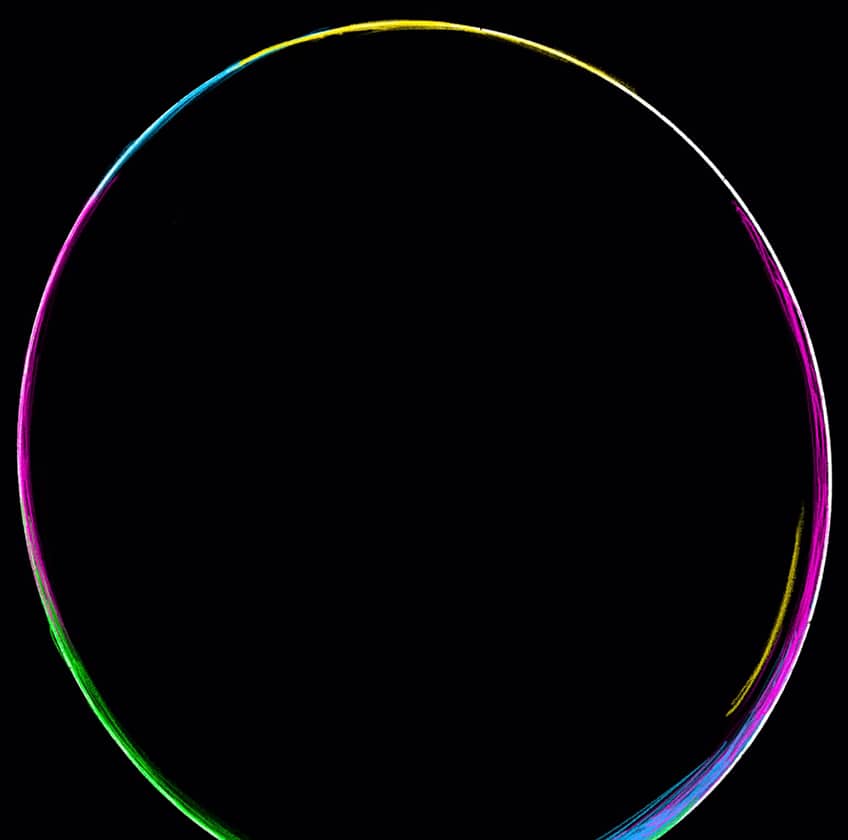
You can work with all your colors to draw in thin curved lines that flow along the inside of the bubble. By doing this, we are giving a light refraction effect on the surface of the bubble.

Step 3: Adding Colored Shapes in the Bubble
This is where we can start to draw thicker shapes within the bubble, the idea is to draw elongated triangular shapes that flow along the curvature of the bubble. We also want to make sure that they are slightly spaced from the previously drawn colored lines.
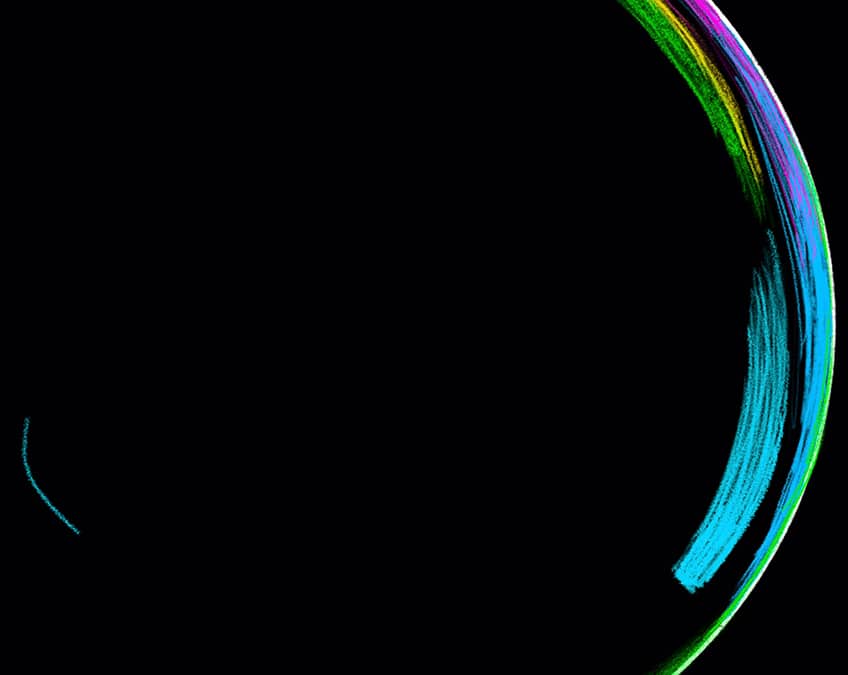
We want to add in these elongated triangular shapes with our light blue pencil at this point, the light blue is going to start functioning as a mid-tone highlight. Again, ensure there is spacing between these marks and that they remain along the edges of the bubble shape.
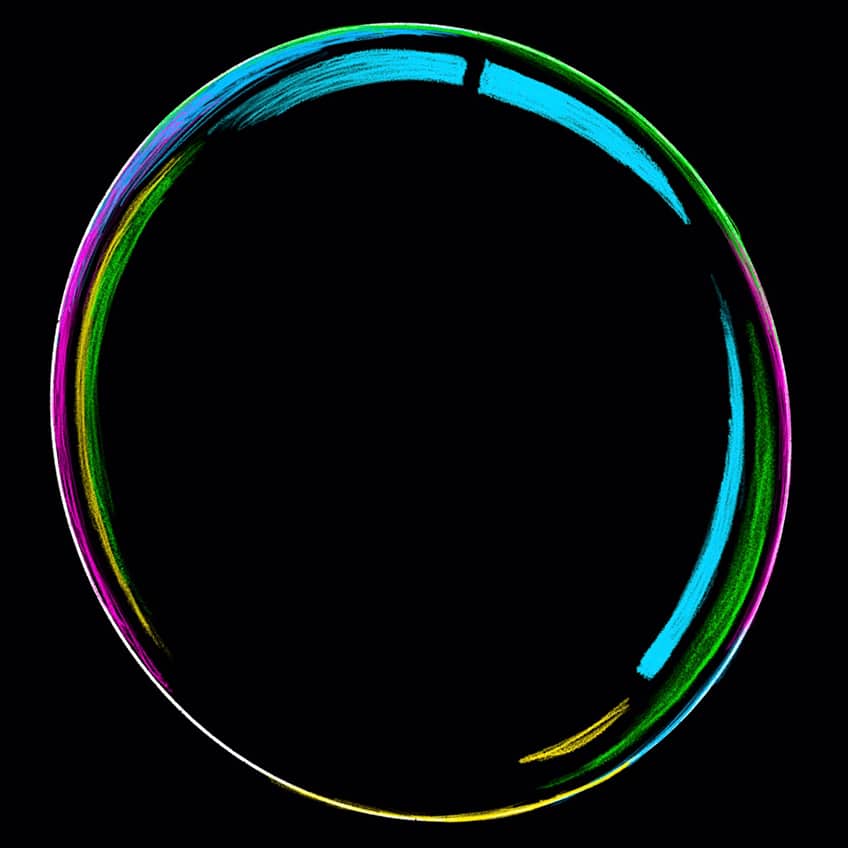
As we add some blue color to the sides of the bubble shape, we also want to have these shapes spread out. This means we don’t want them to be clustered within one area of the bubble, try to spread them out.
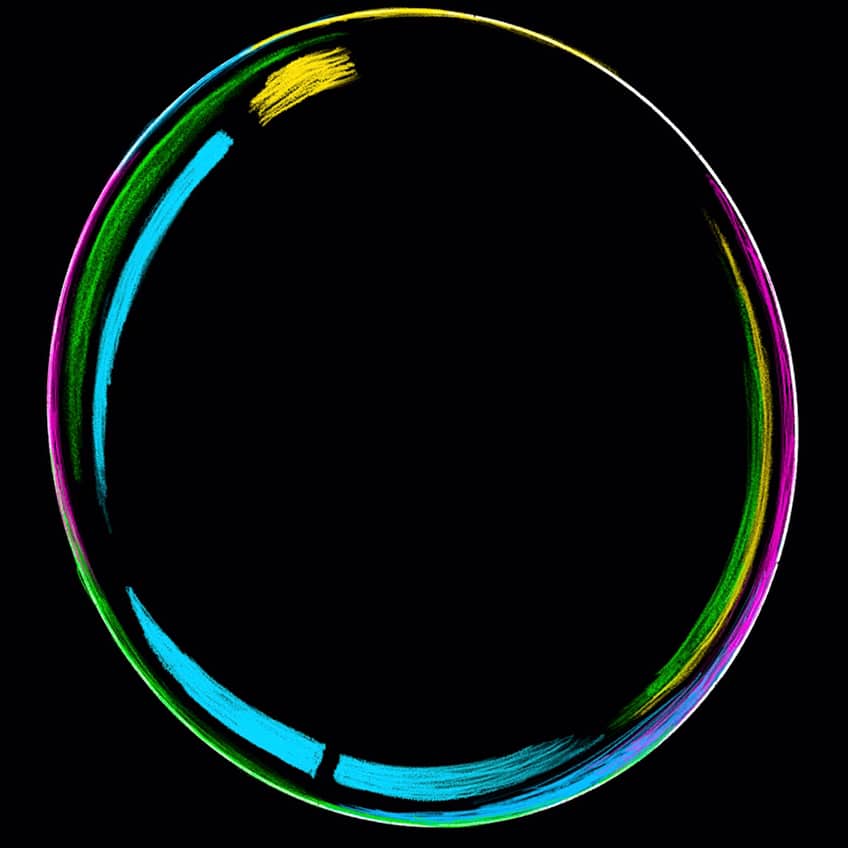
We can also add some shapes along the inner sides of the bubble drawing with our yellow pencil. As we add these shapes along the edges, we start to represent a classic aesthetic of a bubble, which is light refraction.
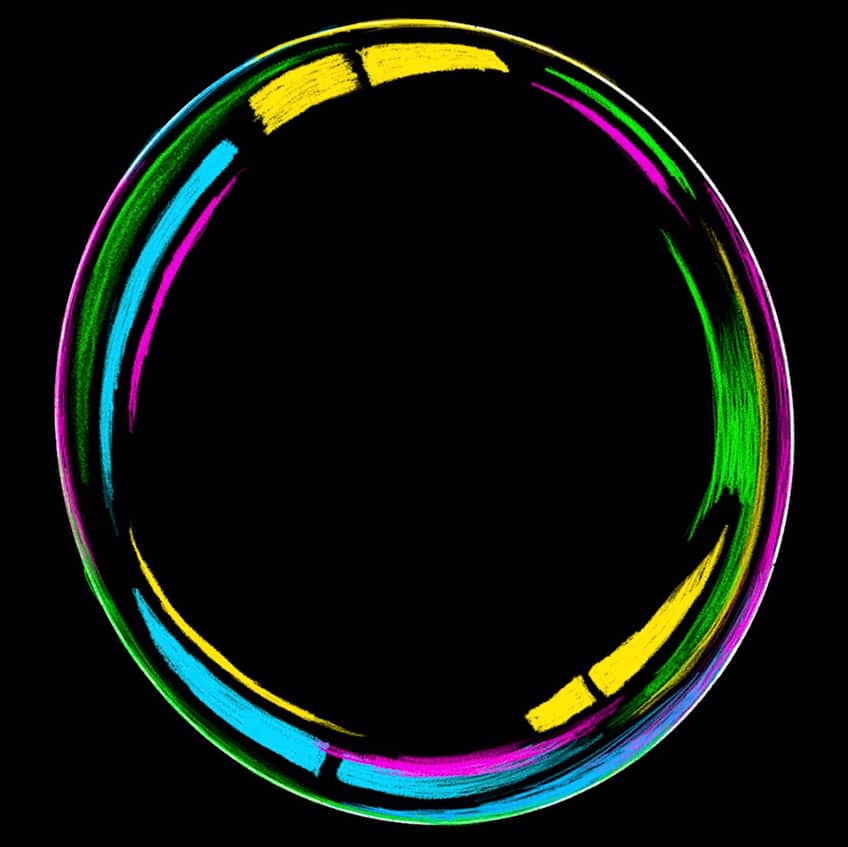
You can start to do it with the green pencil as well, again making sure that the shapes remain curved along the inside of the rim of the bubble.
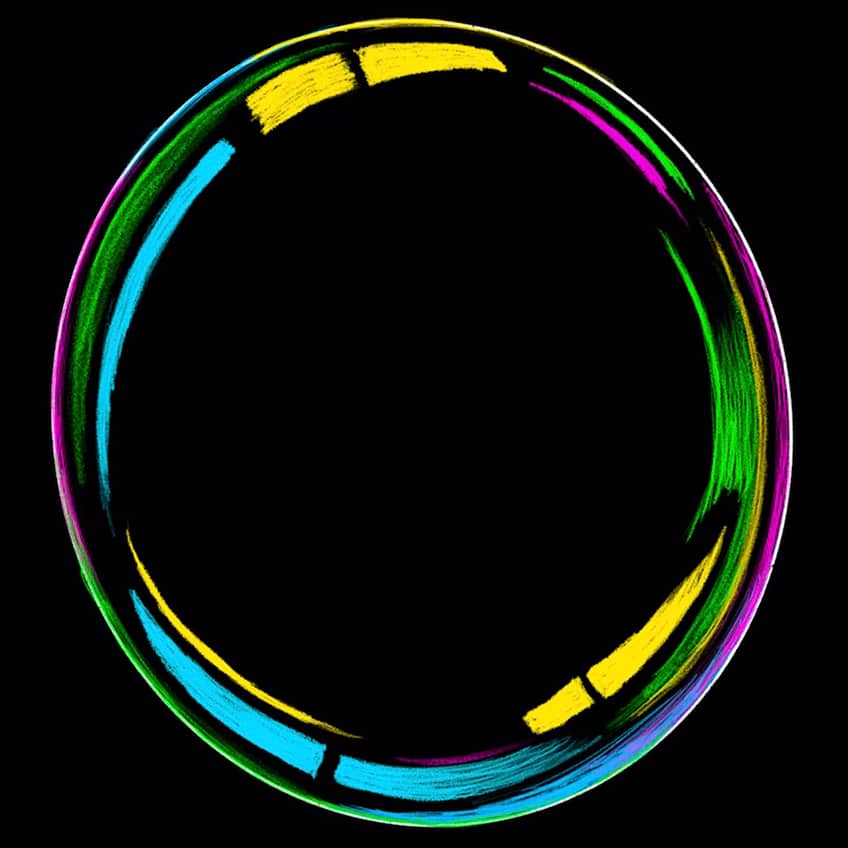
Step 4: Adding White Highlights
Lastly, we can now start to add in some white highlights which will give the bubble a more realistic feel. With these white highlights, we can draw them in blocky shapes, allowing them to be placed more centrally within the bubble shape.

These white highlights should also be separated and be different sizes. By making them different sizes we create a more realistic quality of sporadic highlights bouncing off the surface of the bubble.
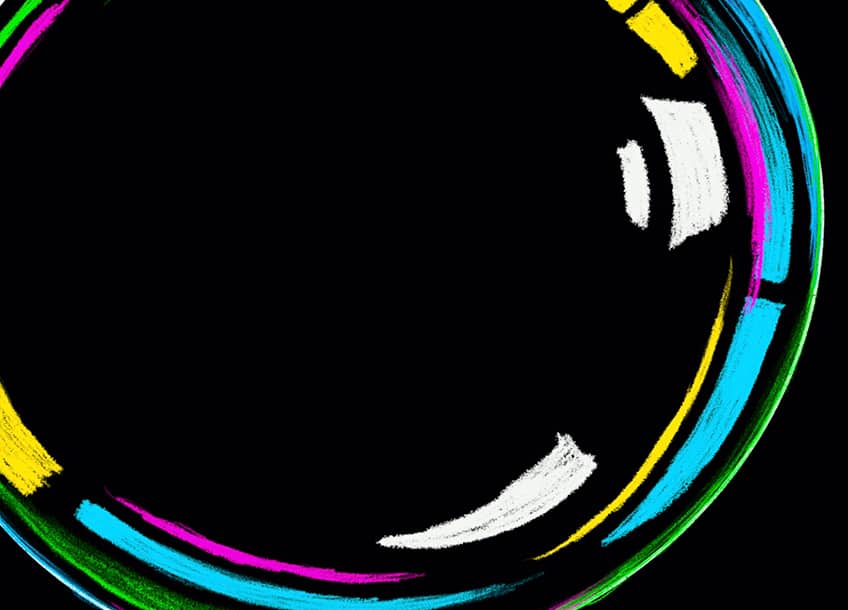
We can also make sure that these white highlights are spread out within the central area of the bubble to suggest curvature on the surface area. A good suggestion is to also add a few little white dots to break up the highlights in scale.
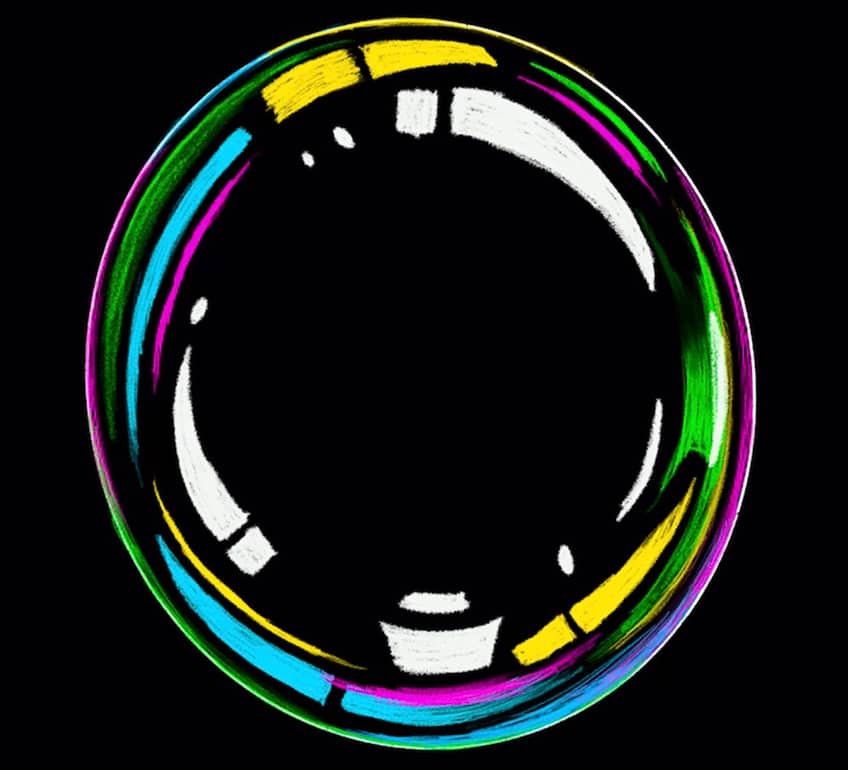
Allow yourself to play around with the highlights but also don’t add in too many. A good suggestion is to also add in some elongated curved white lines, parallel to the inside of the rim of the bubble.
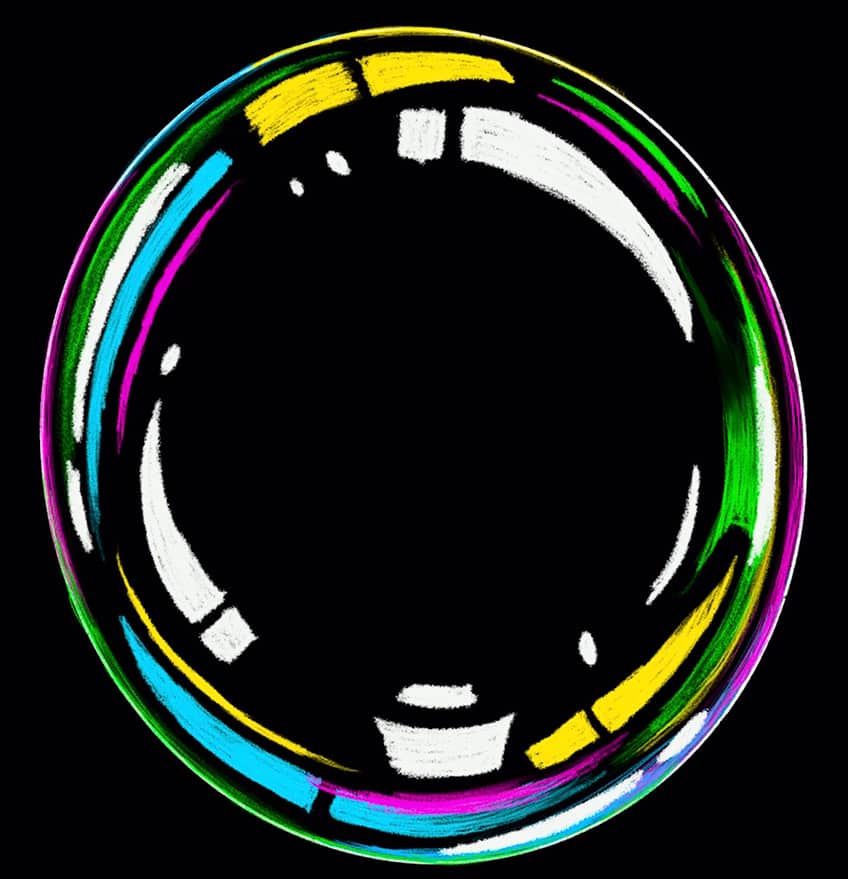
Step 5: Making Duplicates of the Bubble Sketch
Now that we have successfully drawn a bubble and filled in all the necessary marks, colors, and highlights, we can replicate these bubbles. The drawing process will be the same, as it’s simply a matter of sizing and playing around with scale.
That is how you draw bubbles, very simple, very easy, and can be used in so many ways. Now that you know how to draw bubbles, play around with where and how you can use these bubble drawings.
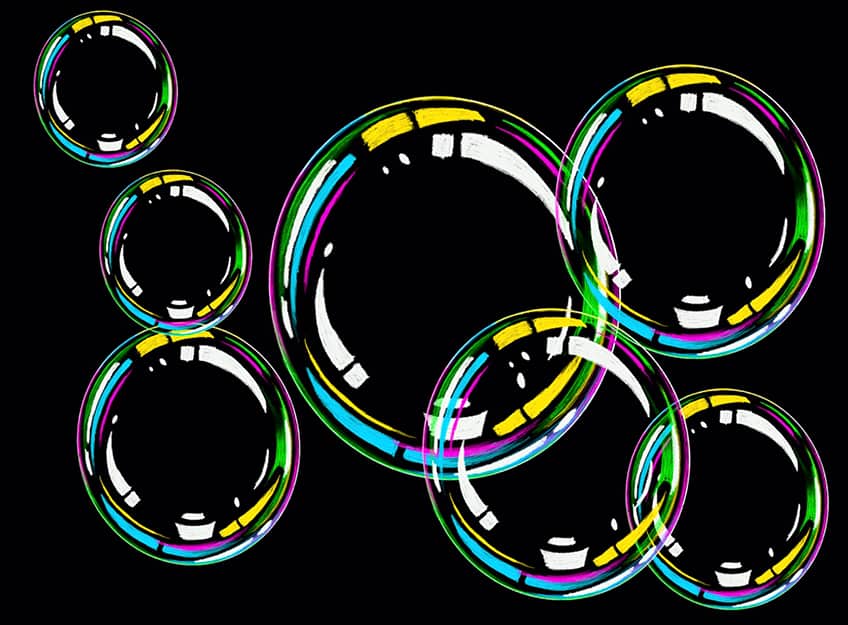
Tips to Remember
- Capture the circular shape first. Make sure that you draw the circle shape and then work on the details.
- Keep your lines curved along the rim of the bubble. Keeping the colored lines curved will establish the curved surface area of the bubble drawing.
- Play around with different colors. You can also use different colors to add more variety to the light refraction effect in the bubbles.
- Try making a few bubbles in different sizes. Often, bubbles are contextualized when accompanied by other bubbles, so try to replicate the process for various-sized bubbles.
A pencil bubbles drawings is simple and can be used in so many different ways. Now that you know the process for a drawing of bubbles, you can experiment with how you would use the bubble sketches and in what type of drawings they can be used as a valuable addition. This tutorial on how to draw bubbles is a great resource to come back to if you feel that you may have forgotten the drawing process.
Frequently Asked Questions
Can You Draw Bubbles on White Paper?
If you sketch bubbles on white paper, it will follow the same process as drawing bubbles on black paper. However, this time, instead of the drawing of bubbles will change slightly when it comes to integrating highlights. This time, we will use negative space to define the highlights in the drawing of bubbles. This means that we will fill the bubble with a faint color of blue to give it a subtle coloration, whilst still having strong highlights from negative spaces within the structure. The drawing of bubbles will still have a transparent quality because we will keep the coloration on the surface area quite faint, and allow for any objects behind to still be visible through the bubble.
How Do You Make Bubbles Transparent?
Whether you draw bubbles on dark or light backgrounds, you will find that the opacity is dependent on the style of the bubble. This means that when we draw bubbles, we are working with a lot of negative space, which stylistically will create a transparent structure. By using negative space predominantly covering most of the surface area of the bubble, the rim of the bubble will define the shape, whilst the middle of the bubble will remain empty. This means that we can draw bubbles over various items and objects within a drawing, and the negative space will function as the transparent quality of the bubble drawing.
Matthew Matthysen is an educated multidisciplinary artist and illustrator. He successfully completed his art degree at the University of Witwatersrand in South Africa, majoring in art history and contemporary drawing. The focus of his thesis was to explore the philosophical implications of the macro and micro-universe on the human experience. Matthew uses diverse media, such as written and hands-on components, to explore various approaches that are on the border between philosophy and science.
Matthew organized various exhibitions before and during his years as a student and is still passionate about doing so today. He currently works as a freelance artist and writer in various fields. He also has a permanent position at a renowned online gallery (ArtGazette) where he produces various works on commission. As a freelance artist, he creates several series and successfully sells them to galleries and collectors. He loves to use his work and skills in various fields of interest.
Matthew has been creating drawing and painting tutorials since the relaunch in 2020. Through his involvement with artincontext.org, he has been able to deepen his knowledge of various painting mediums. For example, watercolor techniques, calligraphy and lately digital drawing, which is becoming more and more popular.
Learn more about Matthew Matthysen and the Art in Context Team.




